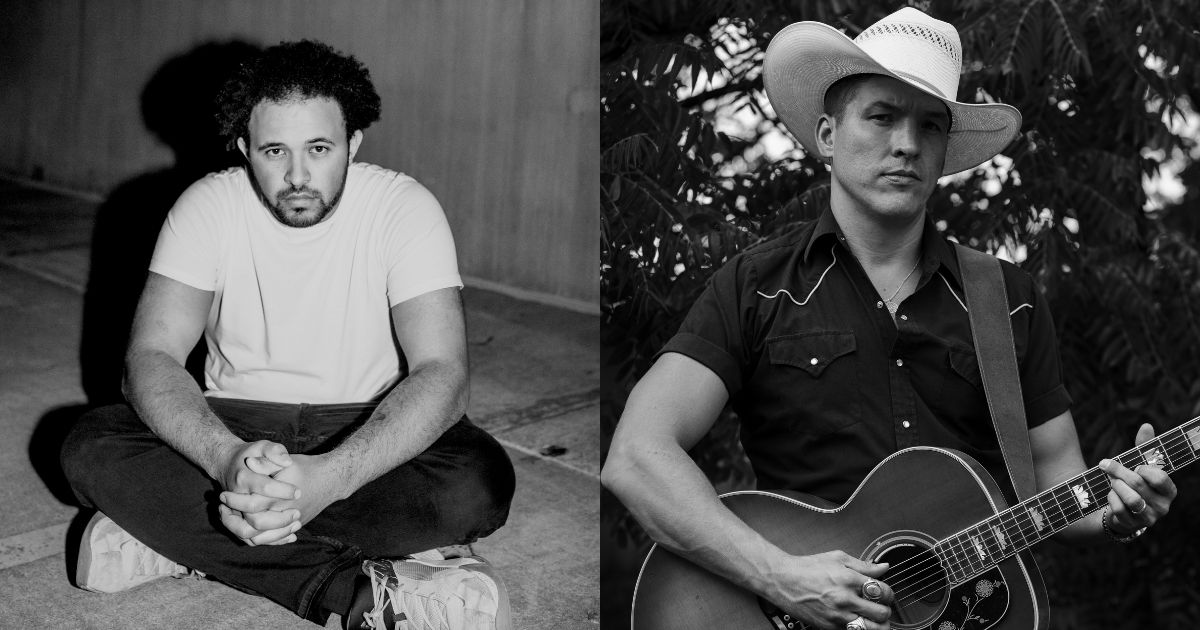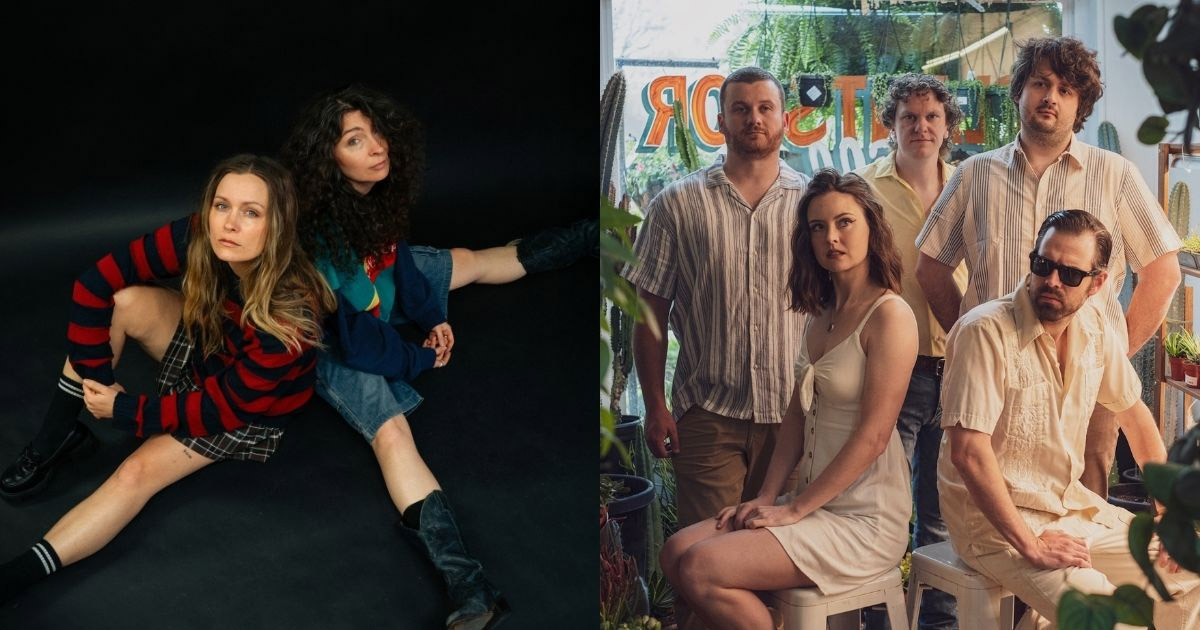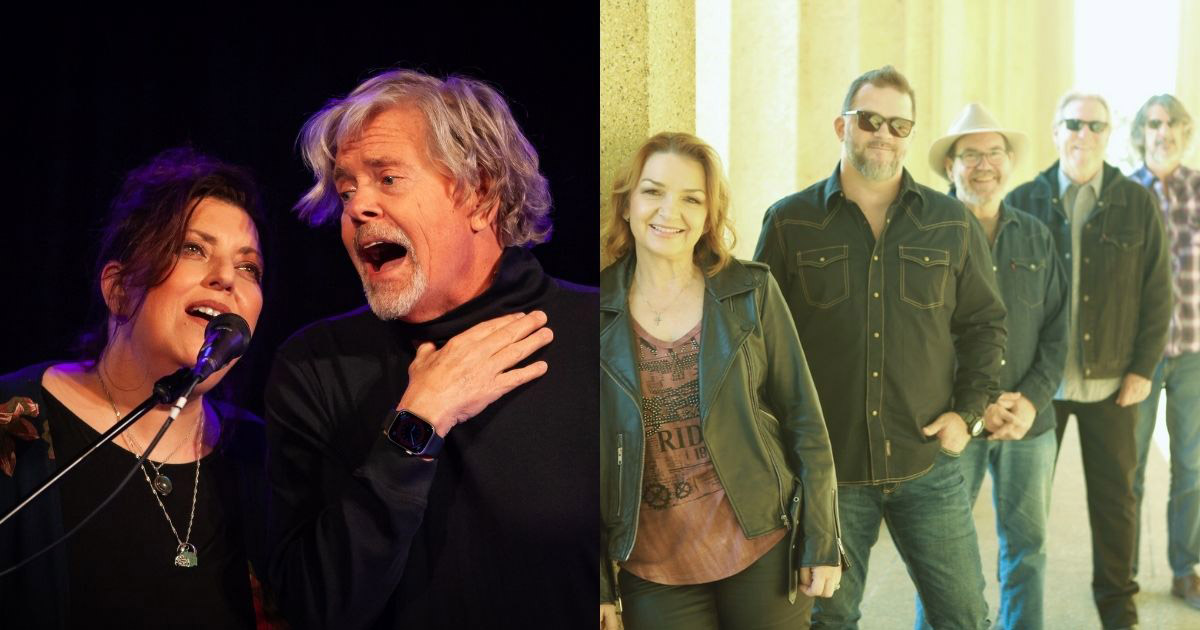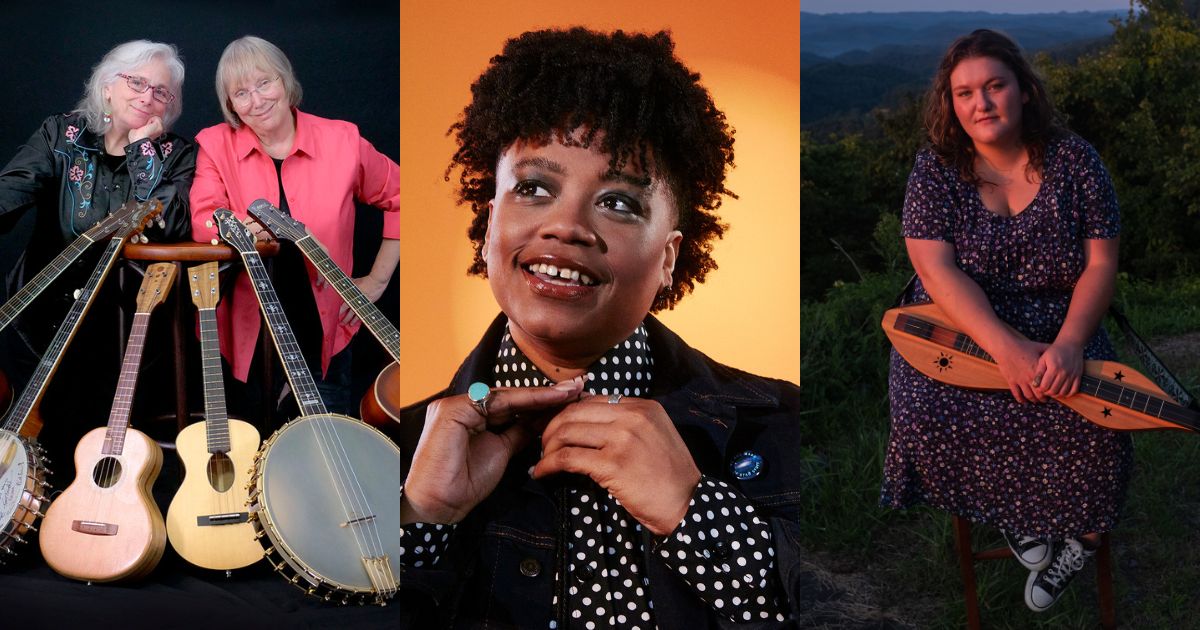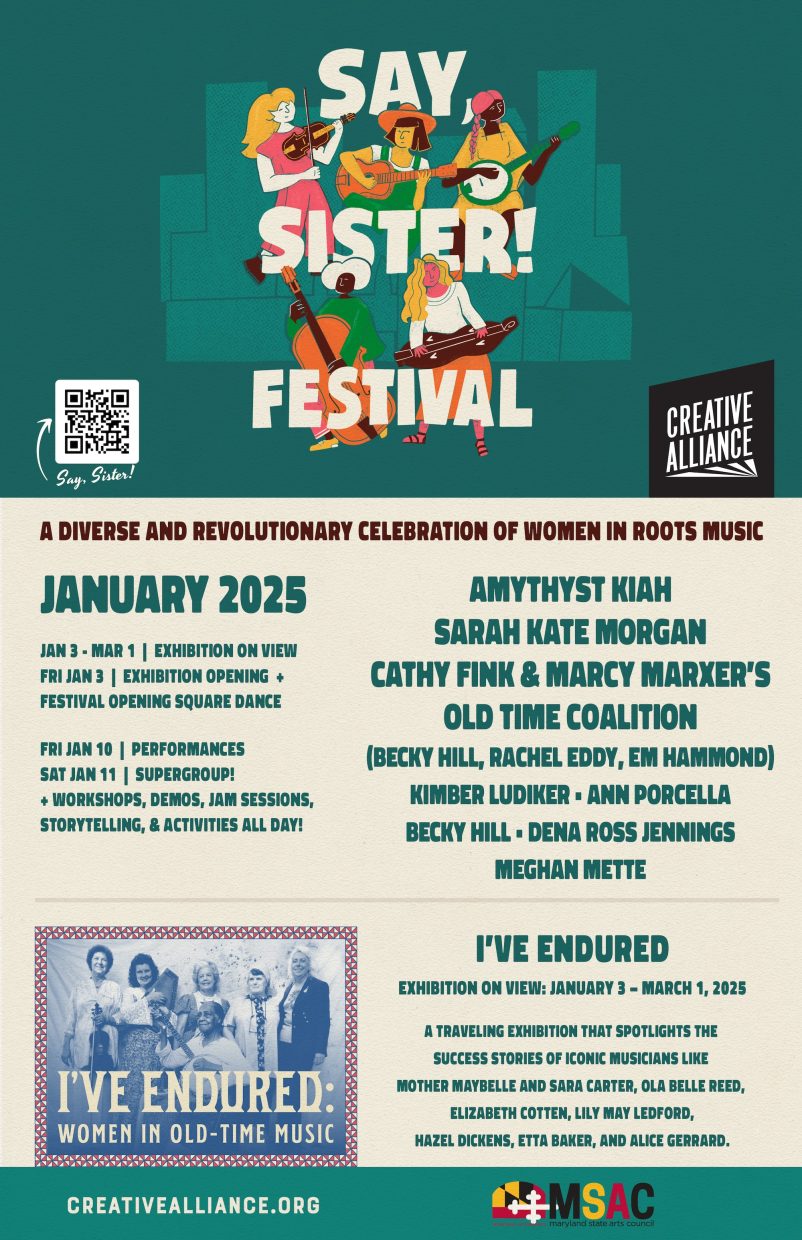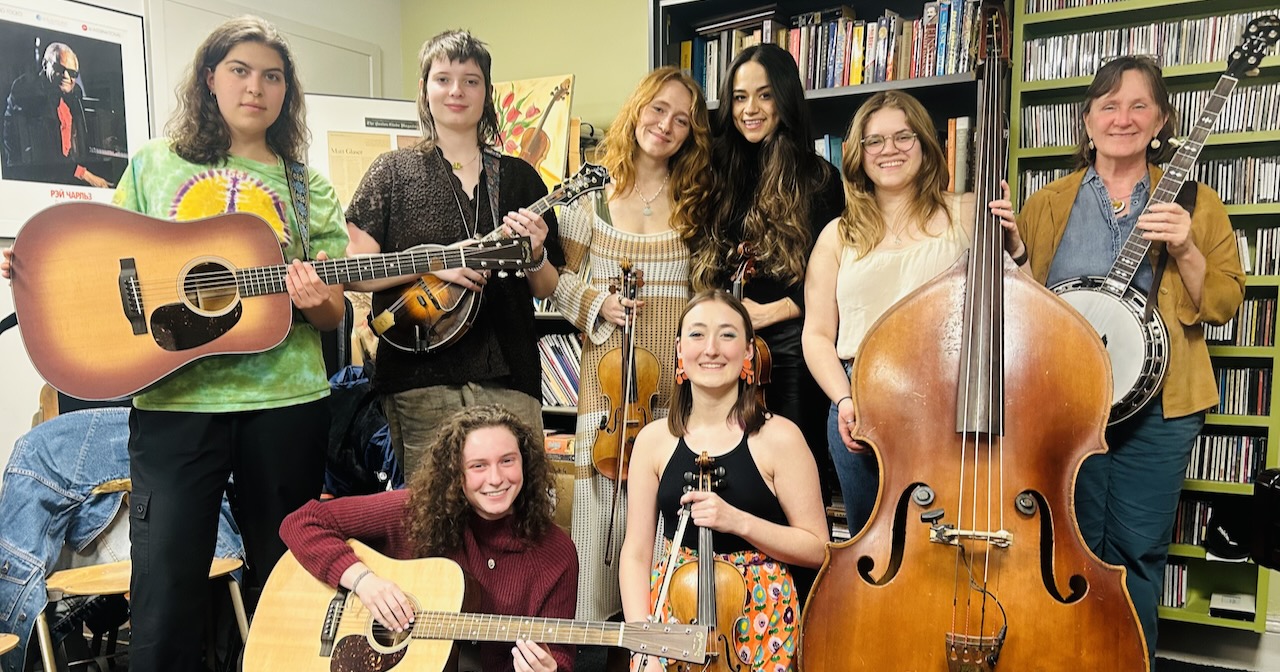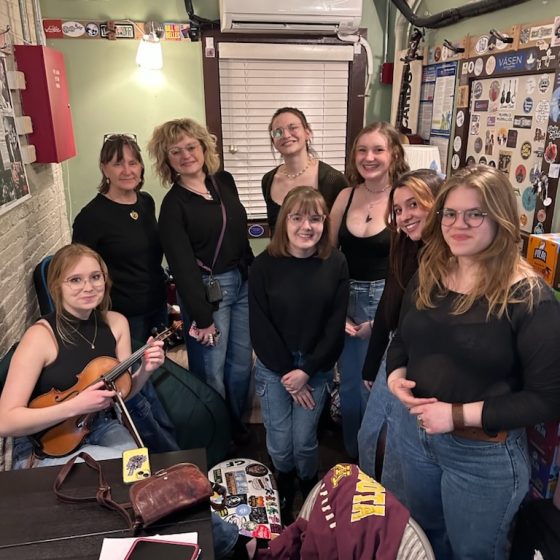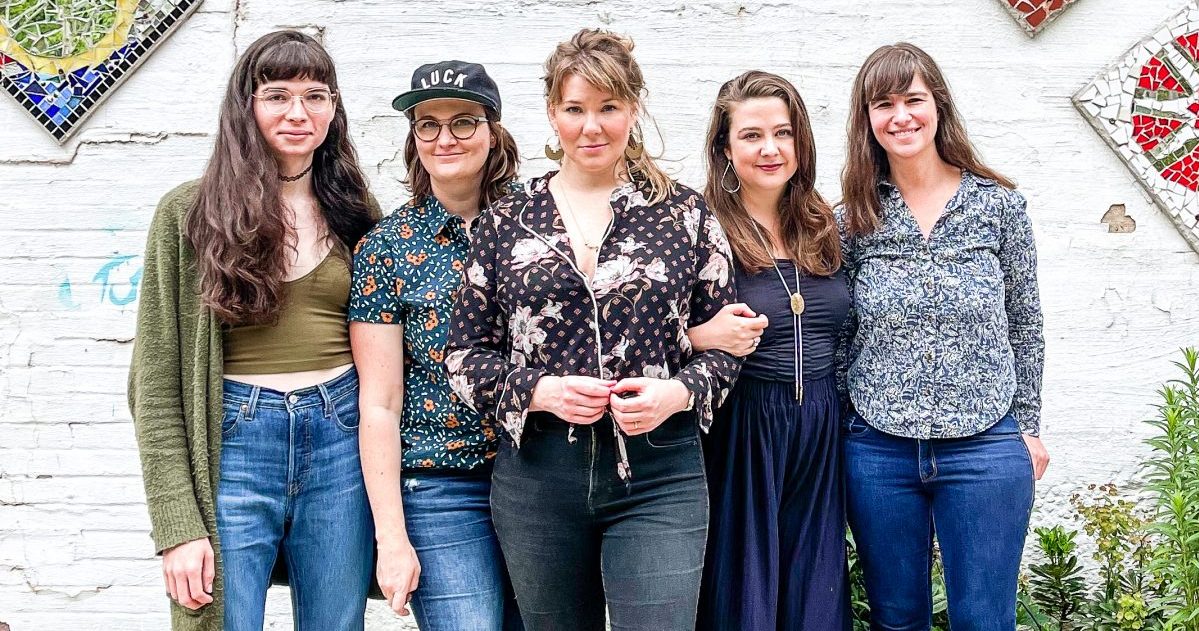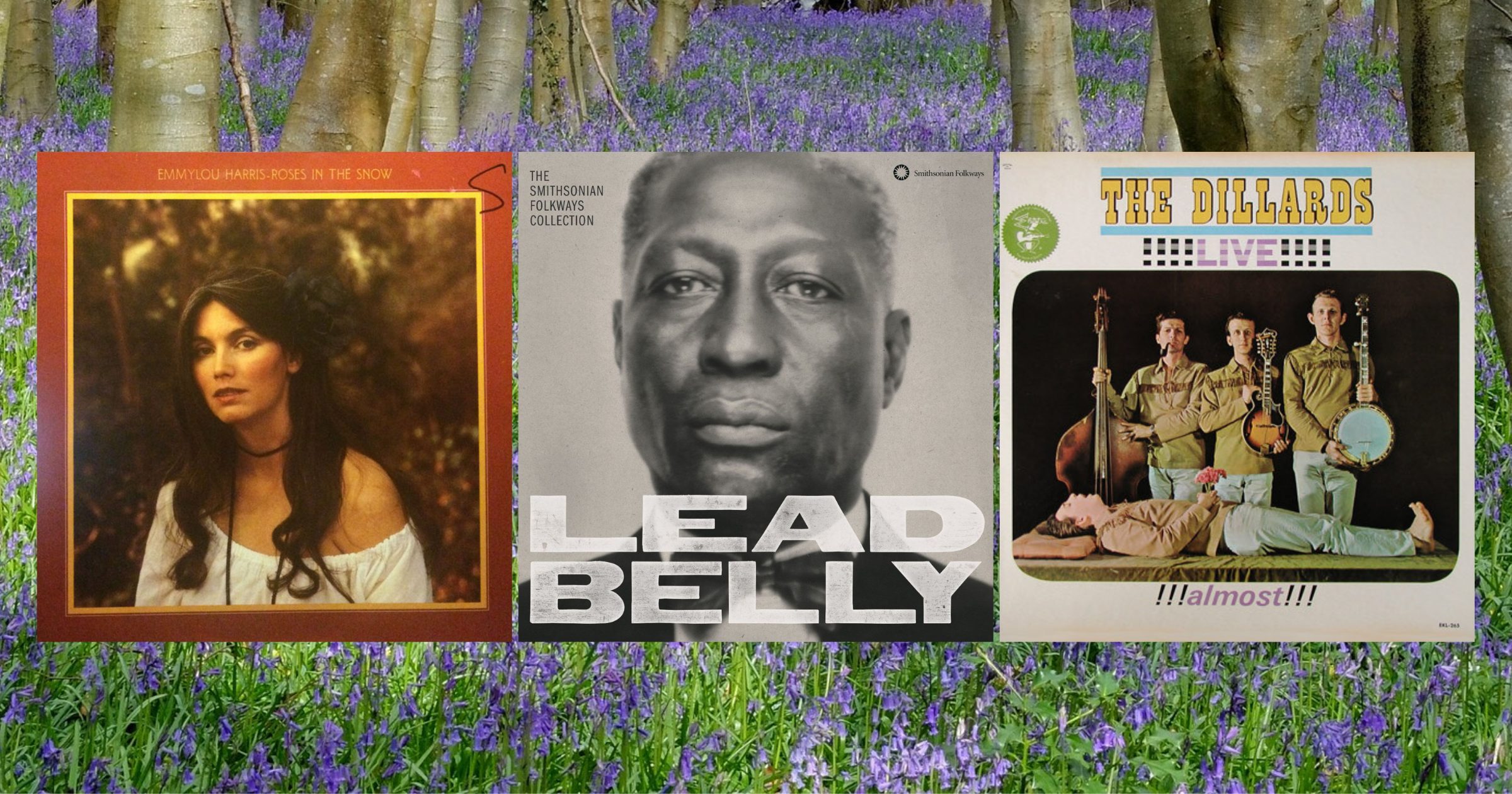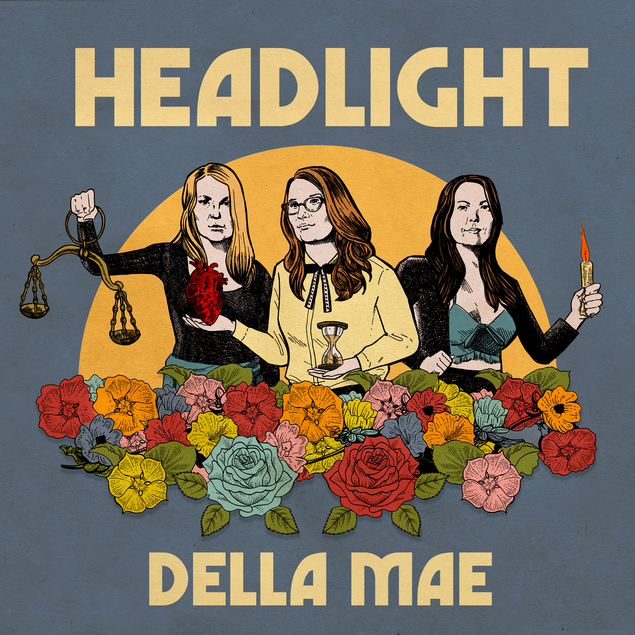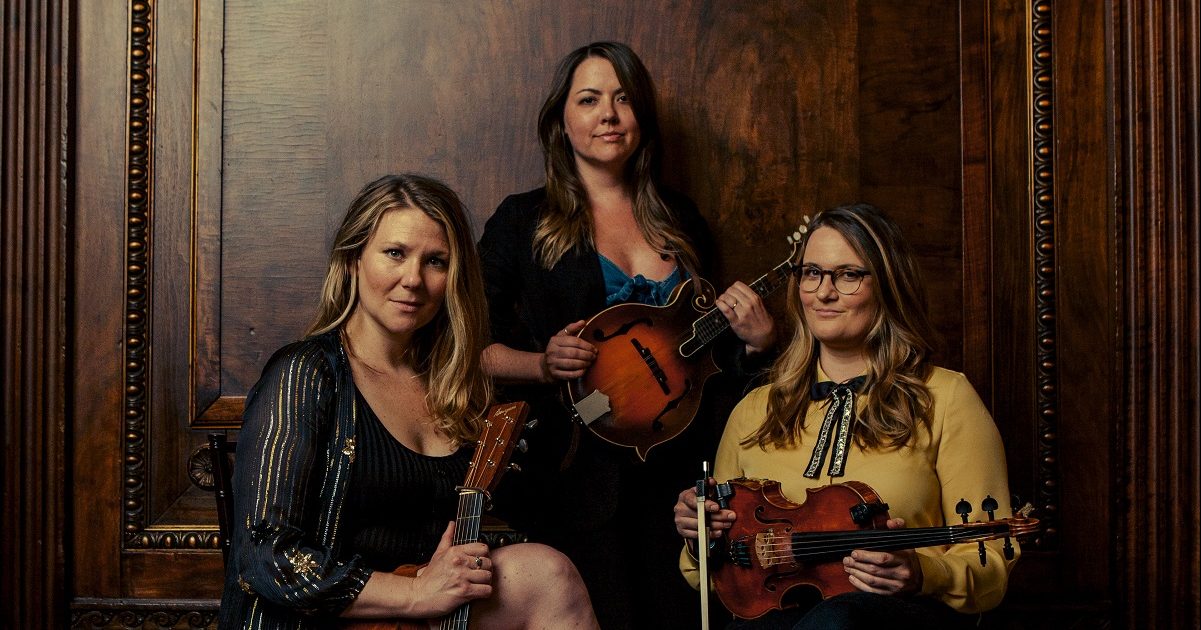Country and folk, bluegrass and new acoustic music all come together in this week’s edition of our new music and premiere roundup!
First up, country singer-songwriter Dallas Burrow is joined by Ray Wylie Hubbard on a brand new music video for their duo track, “Read ‘Em and Weep,” from Burrow’s upcoming September release. The song was inspired by classic gambling songs, so of course Ray Wylie was the perfect special guest to tap for the track and the country & western-styled video. Also bringing a new music video this week are Americana/folk trio The Last Revel, of Minneapolis. “Static” is about the overwhelm and confusion of new love.
In bluegrass, Chris Jones & the Night Drivers tap Jim Lauderdale for a new track, “How Small of Me.” Despite knowing each other for decades, it’s the first time Jones and Lauderdale have collaborated in the studio. Jones’ labelmates Deanie Richardson & Kimber Ludiker debut another new twin fiddle tune, this time offering their take on a Frank Wakefield classic, “New Camptown Races,” with a mighty backing band.
From experimental string band fringes we have a few stellar selections, as well. Award-winning banjoist Tray Wellington readies a new EP – set for release August 8 – with a performance video of an original song, “Man on the Moon,” continuing his creative relationship and fascination with the earth’s celestial relative. It’s jammy, expressive, and contemplative and shows a blend of many of the different styles of ‘grass he often employs. Mandolinist and composer Ethan Setiawan has new music on the way, too. His next project, Encyclopedia Mandolinnica, arrives mid-August and to celebrate, he’s shared a track featuring Joe K. Walsh called “Mount Holly.”
Finally, you won’t want to miss the return of Thompson the Fox, Tokyo’s quartet of mind-bending pickers who combine jazz, bebop, new acoustic, bluegrass, and so much more. Volume 2 of The Fox In Tiger’s Clothing – entitled TIGER – drops next month, so we’re sharing “Minute Waltz Rag,” the group’s reimagination of Chopin’s quintessential composition that’s ragtime, bluegrass, classical, and jazz altogether. Still, it’s incredibly easy to listen to – and impressive in technique and artfulness, both.
It’s all right here on BGS and, truly, You Gotta Hear This!
Dallas Burrow, “Read ‘Em and Weep” featuring Ray Wylie Hubbard
Artist: Dallas Burrow
Hometown: New Braunfels, Texas
Song: “Read ‘Em & Weep” featuring Ray Wylie Hubbard
Album: The Way The West Was Won
Release Date: July 18, 2025 (video); September 26, 2025 (album)
Label: Forty Below Records
In Their Words: “This song, which serves as the opening track of the album, is actually a musical sequel to a song I wrote with my good friend Charley Crockett called ‘The Only Game in Town,’ which I wrote all the verses for after he brought me a chorus and a chord progression. In that song’s third verse the narrator tells us, ‘The dealer is [his] friend and the house always wins.’ This song you might say serves as a challenge to its prequel, with the opening verse declaring, ‘I heard the dealer was your friend, I heard you know him well.’ Both, stylistically, were inspired by great gambling songs like ‘Mr. Mudd and Mr. Gold’ by Townes Van Zandt and ‘Dust of the Chase’ by Ray Wylie Hubbard. It was only fitting then that Ray Wylie would sing on this tune. I gave him the whole record to listen to and this was the one he picked out to sing on. It was quite the honor to have him sing the entire second verse, since he’s always been one of my biggest inspirations and heroes. The tune opens with producer Lloyd Maines counting it off and playing a striking harmonic guitar part. As the track continues to build it is further brought to life by Lloyd’s legendary Dobro playing, and Katie Shore’s immaculate fiddle work.” – Dallas Burrow
Track Credits:
Ray Wylie Hubbard – Vocals
Dallas Burrow – Vocals, acoustic guitar, songwriter
Katie Shore – Fiddle
Lloyd Maines – Dobro, bass, acoustic guitar, producer
Pat Manske – percussion
Chris Jones & the Night Drivers, “How Small of Me” featuring Jim Lauderdale
Artist: Chris Jones & The Night Drivers
Hometown: Nashville, Tennessee
Song: “How Small of Me”
Release Date: July 18, 2025
Label: Mountain Home Music Company
In Their Words: “Jim Lauderdale and I have been friends for decades now, but this is the first time we have ever sung together on a recording, so I’m really happy about this. Meanwhile I co-wrote the song with John McCutcheon, somebody I first met when I was a teenager, and though more recently, he’s somebody who the band and I have performed with a few times at the Walnut Valley Festival in Kansas, we had never written a song together until last year, and ‘How Small of Me’ is one of our first results.” – Chris Jones
Track Credits:
Chris Jones – Acoustic guitar, lead vocal
Jim Lauderdale – Harmony vocal
Mark Stoffel – Mandolin
Grace van’t Hof – Ukelele
Jon Weisberger – Bass
Tony Creasman – Drums
Chris Scruggs – Steel guitar
The Last Revel, “Static”
Artist: The Last Revel
Hometown: Minneapolis, Minnesota
Song: “Static”
Album: Gone For Good
Release Date: July 18, 2025
Label: Thirty Tigers
In Their Words: “It’s a simple little song about how overwhelming and confusing love can feel especially in the beginning. It’s about losing yourself and everything you have just to spend time with the only person that seems to be vibrating at the same frantic frequency while everything else seems still and static.” – Lee Henke
Deanie Richardson & Kimber Ludiker, “New Camptown Races”
Artist: Deanie Richardson & Kimber Ludiker
Song: “New Camptown Races”
Release Date: July 18, 2025
Label: Mountain Home Music Company
In Their Words: “‘New Camptown Races’ is a song that Kimber and I played together last year and it went so well we knew it was one we wanted on this record. I went to a recording from one of my fiddle heroes, Randy Howard, on this. I will admit, I did steal a few licks from Randy on this one. Love that my dear friend is with us on this track.” – Deanie Richardson
“We have long loved Frank Wakefield’s great mandolin tune ‘New Camptown Races,’ which quickly became part of the bluegrass canon when he first recorded it in 1957. We set out to create a twin fiddle reimagining of this classic Bb tune with the spirit of a high-energy late-night jam with phenomenal playing by Tristan Scroggins on mandolin, Kristin Scott Benson on banjo, Cody Kilby on guitar, and Hasee Ciaccio on bass.” – Kimber Ludiker
Track Credits:
Deanie Richardson – Fiddle
Kimber Ludiker – Fiddle
Cody Kilby – Acoustic guitar
Hasee Ciaccio – Upright bass
Tristan Scroggins – Mandolin
Kristin Scott Benson – Banjo
Ethan Setiawan, “Mount Holly” featuring Joe K. Walsh
(Click to listen)
Artist name: Ethan Setiawan
Hometown: Cornish, Maine
Song: “Mount Holly” featuring Joe K. Walsh
Album: Encyclopedia Mandolinnica
Release Date: July 23, 2025 (single); August 15, 2025 (album)
Label: Adhyâropa Records
In Their Words: “This one’s for the Fogels, at whose cabin in Vermont I spent a couple of great New Years, and who smoke the most delicious meat at all hours at festivals in the Northeast. I started to work on the tune in 2022 or 2023 up in Vermont and then finished it soon before tracking with Joe in early 2024. I finished it without a mandolin in hand, which lately has been a good exercise in letting my ear rather than my hands guide the composition. I’m playing mandola and Joe is playing octave mandolin, because we had to get in those low mandolins!” – Ethan Setiawan
Thompson the Fox, “Minute Waltz Rag”
Artist: Thompson the Fox
Hometown: Tokyo, Japan
Song: “Minute Waltz Rag”
Album: The Fox In Tiger’s Clothing, Vol.2: TIGER
Release Date: August 9, 2025
Label: Prefab Records
In Their Words: “Following our May release of The Fox In Tiger’s Clothing, Vol.1: FOX, we’re excited to announce the upcoming release of its sister album, Vol.2: TIGER, coming out on August 9.
“The album title is a play on two phrases from different cultures: the Japanese proverb, ‘The fox borrowing the tiger’s authority’ and the English idiom, ‘A wolf in sheep’s clothing.’
“While Vol.1: FOX consisted entirely of our original compositions, Vol.2: TIGER is a collection of cover tunes. Ahead of the album’s release, we’ve just shared a music video for ‘Minute Waltz Rag.’ It’s a reimagining of Chopin’s beautiful waltz, which I arranged in two-time for this quartet. We hope you enjoy it!” – Takumi Kodera
Track Credits:
Rie Koyama – Xylophone
Takumi Kodera – Banjo
Akihide Teshima – Bass
Tomohito Yoshijima – Drums
Video Credit: Takumi Kodera
Tray Wellington, “Man on the Moon”
Artist: Tray Wellington
Hometown: Raleigh, North Carolina
Song: Man on the Moon
Album: Spatial Awareness (EP)
Release Date: July 18, 2025 (single); August 8, 2025 (EP)
Label: Free Dirt Records
In Their Words: “‘Man on the Moon’ is one of the most personal songs I’ve ever written. I wanted to capture how easy it is to hide struggle behind a smile and how many of us carry that weight silently. Writing has always helped me process things I hadn’t fully acknowledged and I hope it can do the same for someone else. This track was also one of my favorites for production as it’s one of the songs I feel like we really captured the feelings of the song throughout.” – Tray Wellington
Video Credit: Rob Laughter
Photo Credit: Tray Wellington by Heidi Holloway; Dallas Burrow by Melissa Payne.
